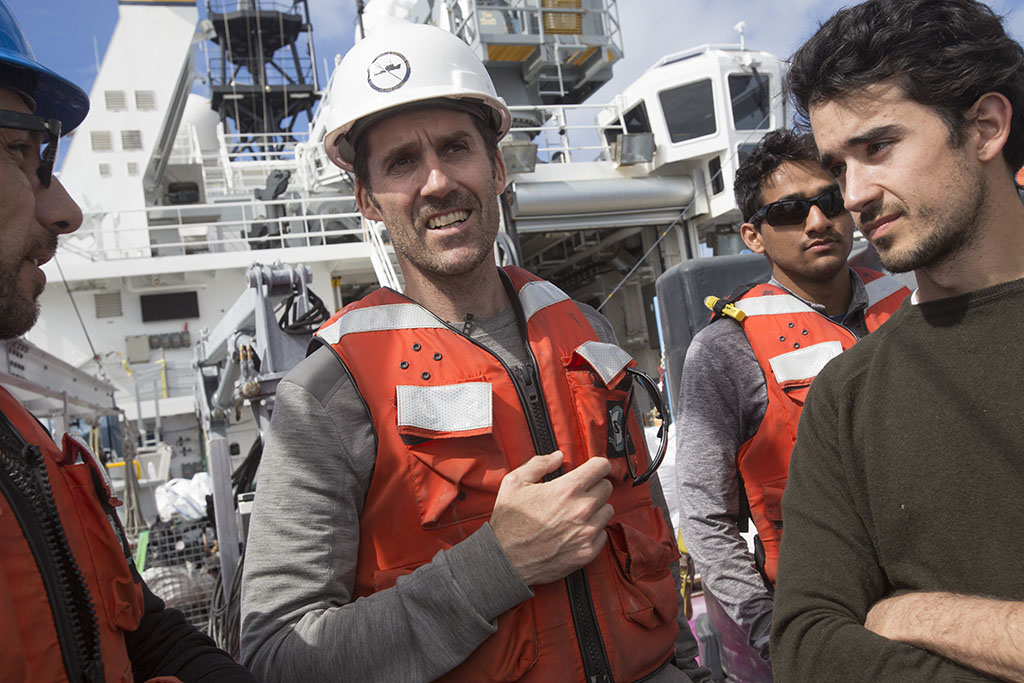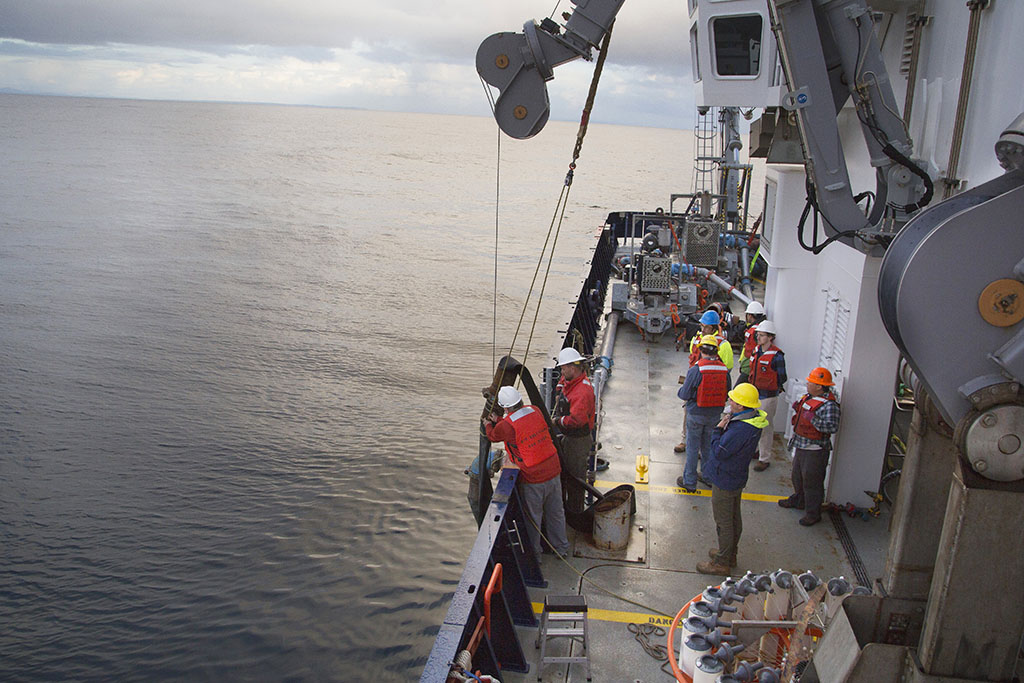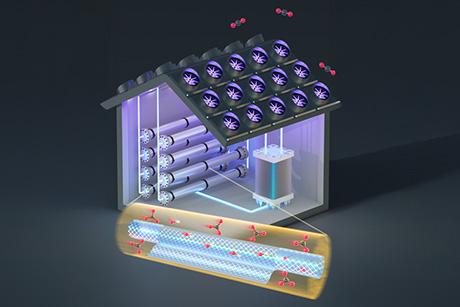Talking Shop: Professor Thomas Peacock
Understanding the Environmental Impact of Deep-Seabed Mining
In the large swath of the Pacific Ocean between Hawaii and Baja California, the ocean floor is peppered with baseball-sized nodules that contain more cobalt, copper, and nickel than all the land-based mines globally. As demand for more materials steadily climbs and the quality of land based resources declines, government and industry have started investigating the potential of these resources 5,000 meters below the surface of the ocean. The topic of obtaining the mineral-packed nodules from the deep seabed is referred to as deep-sea mining, although unlike typical land-based mining, there is no drilling in nodule collection.
Relatively little is known about the environmental impact of seabed mining, however. The International Seabed Authority, an independent organization established by the UN, has turned to researchers like Thomas Peacock, professor of mechanical engineering at MIT, to ensure the full effects of seabed mining are understood prior to drafting regulations.
How did you first get interested in studying seabed mining?
My training is in fluid dynamics and I tend to work on ocean-related problems. Most of my research has been fundamental in nature. But I started looking for opportunities to work on a societal problem. I identified deep-sea mining as a topic to work on because one of the largest issues I see facing society is pressure on raw material supplies. Given continued population growth and urbanization, before we can achieve a global circular economy it seems there will continue to be an increased demand for minerals over the coming decades. Mining the seabed could open up a new world of possibilities for getting these materials, but we need to determine what the impact would be in comparison to land-based mining activities. To get my project started, I received a seed grant from the MIT Environmental Solutions Initiative, and I have also received a great deal of support from the MIT International Policy Lab.
How do you mine the ocean floor thousands of meters below sea level?
My research focuses on the collection of polymetallic nodules that sit on the seabed floor. These nodules contain nickel, cobalt, and copper. They grow at a rate of one centimeter every million years. To get the nodules, the proposed process is to use a collector device that acts as a vacuum and sucks up the top 10 or so centimeters of the seabed. The collector then separates the nodules from the sediment and these nodules will be transported via a riser pipe system to a surface operation vessel that will do some further handling of the nodules before they are shipped to shore. As the collector moves across the seabed floor, it stirs up sediment and creates a dust cloud or plume that’s carried away and distributed by ocean currents. My focus has been researching the dynamics of these sediment plumes.
What are the environmental concerns with deep-seabed mining?
The dynamics of the deep ocean is very slow. The natural rate of sedimentation in the ocean is one millimeter every one thousand years. After the collector removes the upper layer of the seabed, that area is unlikely to recover on a reasonable timescale. From a biologist’s perspective, the concern is that if there is a biological community specific to the area, it might be irretrievably disrupted due to mining.
Since plumes of sediment are kicked up by the collector and transported away, there is also a concern about how sediment from plumes could impact sea life where it settles on other parts of the seabed. To determine to what extent sea life is being negatively impacted, we need to understand how these plumes would be transported throughout the ocean.
How do you use your background in fluid dynamics to gain more insight on the environmental impacts of seabed mining?
We’ve done a lot of work on the dynamics of the mining plumes and use mathematical models for describing the behavior of the plumes near where they’re discharged by the collector. That knowledge can be used as an input to a numerical model that simulates the ocean currents transporting the plumes around. We collaborate with Pierre Lermusiaux, professor of mechanical engineering and ocean science and engineering, who has the expertise in these ocean models.
Have you been able to put these models into practice in field experiments?
Yes, I oversaw an expedition called PLUMEX in March of this year that was the first field study of a sediment plume discharged by an operational vessel after the useful nodules have been obtained. The ship resources were generously supplied by the University of California, through collaboration with my colleague Professor Matthew Alford at the Scripps Institution of Oceanography. We had other researchers from MIT, the USGS, the University of Hawaii and the ISA involved.
The field experiments we conducted off the coast of San Diego showed us that we can use the models that we’ve developed to make reasonable predictions about how these plumes behave, which will be essential in understanding seabed mining’s environmental impact. My group at MIT, the Environmental Dynamics Lab (ENDLab) will continue this research by contributing to an important prototype collector vehicle study in the deep Pacific Ocean this spring. It’s great to have researchers join the conversation early and help make informed decisions so we can fully understand the environmental impact of mining resources from the ocean and compare it to the environmental impact of mining resources on land.




